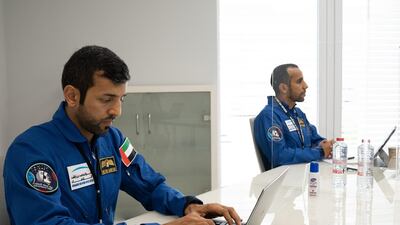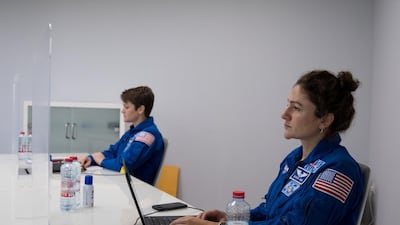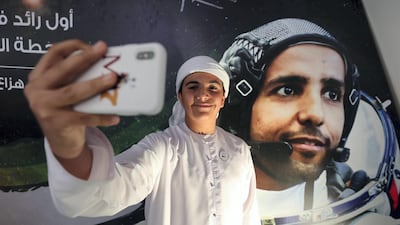More than 4,000 hopefuls were whittled down to 14 as the UAE's hunt for its next two astronauts reached its final stage.
Nine men and five women are vying for the coveted roles after a rigorous selection process that has taken more than a year.
The remaining candidates will undergo an intense interview round that involves being questioned by Maj Hazza Al Mansouri, the first Emirati to travel into space, and Dr Sultan Al Neyadi, reserve astronaut for the landmark journey to the International Space Station.
Those who pass the interview phase face a final evaluation process consisting of interviews by a committee of specialists at Mohammed bin Rashid Space Centre, before the two astronauts are chosen in January.
“We have reached an important stage in the programme to select the second batch of Emirati astronauts,” said Yousuf Hamad Al Shaibani, director general of the space centre, which leads the UAE Astronaut Programme.
“They will participate in scientific space exploration missions in partnership with international astronauts, which serves the aspirations of the country to participate in global space missions.”
How the final 14 made it this far
The recruitment drive attracted 4,305 Emiratis aiming to reach for the stars, a 7 per cent increase on the first selection round in 2018.
This number was cut to 2,099 based on age, educational background and scientific research experience before the top 1,000 were selected after IQ, personality and technical assessments.
After evaluating the top 1,000 candidates, the MBRSC evaluation committee selected 122 applicants, who were then interviewed online. Based on the interviews, the 122 candidates were further evaluated, bringing the shortlist down to 61 applicants.
The team at MBRSC then conducted preliminary and advanced medical examinations on the shortlisted candidates, cutting the number to 30, who moved to the final phase. This number was reduced to 14 after preliminary interviews.
The average age of the final 14 is 36 years, with the youngest 24 and oldest 38.
Nine candidates hold a bachelor's degree, four have a master's and one has a doctorate.
Nine of them work in the engineering sector, four are in aviation and one is from metrology.
“The final phase of assessments by Emirati astronauts Hazza, Sultan and Nasa astronauts adds another dimension to the programme and increases the efficiency of the evaluation process,” Mr Al Shaibani said.
“We are constantly strengthening strategic partnerships with global partners as they bring a wealth of knowledge and expertise to Emirati astronauts. At the same time, it also highlights the centre's role in strengthening its links with specialised international entities such as Nasa and building bridges of co-operation between leading global space organisations and agencies."
What awaits the UAE's next space travellers?
The chosen astronauts will begin their training at Nasa’s Johnson Space Centre in Houston once the next class begins in the second half of 2021.
Maj Al Mansouri and Dr Al Neyadi are currently training there for long-haul space missions, which involves learning the space station's systems and how to spacewalk.
Once they graduate, they will qualify for Nasa-led missions to space.
“MBRSC seeks to prepare national cadres who can contribute to knowledge sharing in the space sector,” said Salem Al Marri, head of the astronaut programme.
“This will further equip the space sector with trained and expert personnel who will enable us to participate in future space exploration missions.
"The goal of the UAE Astronaut Programme is to establish a sustainable programme for the coming years."
Sheikh Mohammed bin Rashid, Vice President and Ruler of Dubai, said new Emirati space missions would be coming within this decade.
The UAE used Russia's Soyuz to send Maj Al Mansouri for an eight-day trip to space.
Now it has the option of using the same rocket or the services of SpaceX.
Nasa has chosen to team up with commercial space companies to send astronauts into space, enabling the return of human space flights from US soil.
SpaceX has already flown an international crew to the space station. More space flights are scheduled, with a mix of astronauts from various space agencies.


























